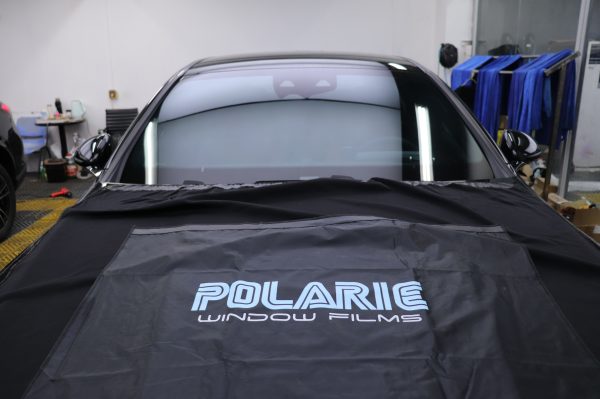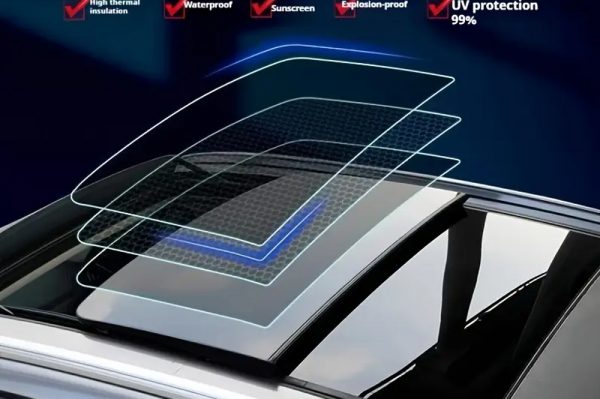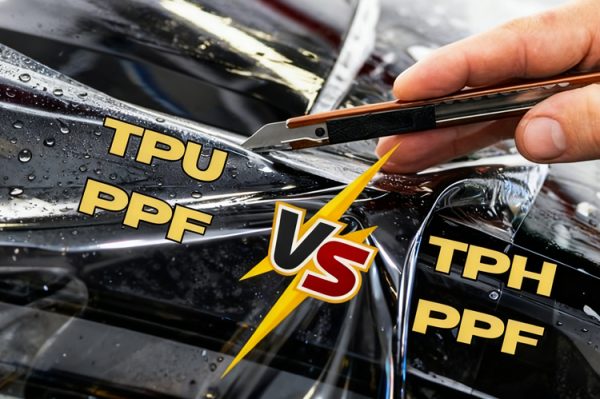
Paint Protection Film (PPF) is one of the most popular methods to keep your car’s paint intact and shield it from scratches, stone chips, and harsh weather. While PPF promises long-lasting clarity and gloss, many car owners face a common frustration: the film turning yellow over time. If you’ve noticed your once crystal-clear film becoming discolored, you’re not alone. Let’s explore why this happens and how premium solutions like Polarie can prevent it.
What is Paint Protection Film?
Ingredients: PPF is typically made from thermoplastic polyurethane (TPU).
Function: It acts as a barrier to protect factory paint from external damage.
Types: Some films are basic, while others include self-healing, hydrophobic layers, and UV resistance.
A high-quality PPF should remain invisible for years, but poor maintenance, low-grade materials, or harsh environments often cause discoloration.
Why Does PPF Turn Yellow?
- Low-Quality Materials – Cheap TPU or adhesives degrade quickly under UV exposure.
- UV Radiation – Sunlight breaks down chemical bonds, leading to oxidation and yellowing.
- Environmental Pollution – Acid rain, smog, and road chemicals react with PPF, causing discoloration.
- Improper Cleaning – Harsh detergents damage the topcoat and accelerate yellowing.
- Heat & Humidity – Warm, humid climates speed up adhesive breakdown and color change.
- Film Aging – No film lasts forever; older generations yellow much faster.
Effects of Yellowing PPF
- Loss of Aesthetics: The once-invisible layer now makes the car look older.
- Lower Resale Value: Buyers may assume poor maintenance.
- Reduced Protection: Yellowed film signals weakened performance.
How to Prevent PPF from Turning Yellow?
- Choose High-Quality PPF
Select a trusted brand like Polarie, which uses Covestro TPU base film, Bostik adhesive, and our proprietary RTC Dual-Nano Coating to resist oxidation and UV damage. - Park in Shade or Indoors
Reduce direct UV exposure whenever possible. - Use Neutral Cleaning Products
Stick to pH-neutral shampoos instead of harsh chemicals. - Regular Maintenance
A ceramic coating layer on top of the PPF enhances UV and chemical resistance. - Timely Replacement
If the film is heavily yellowed, the best option is to replace it with modern, premium-grade PPF.
How Polarie Solves the Yellowing Issue
- Covestro TPU Base
High-performance TPU ensures excellent weather resistance and long-term stability. - RTC Dual-Nano Coating
Our in-house developed coating provides double-layer protection against UV, oxidation, and contaminants—keeping the film crystal clear for years. - Bostik Adhesive
Premium adhesive ensures durability, no premature breakdown, and strong bonding. - Self-Healing Top Layer
Light scratches and swirls disappear with heat, keeping your car’s finish flawless. - Extended Warranty
Polarie PPF comes with up to a 10-year warranty covering yellowing, bubbling, or lifting.
Conclusion
If your PPF has turned yellow, it’s a sign of poor-quality materials or aging. With Polarie PPF, backed by Covestro TPU, RTC Dual-Nano Coating, and Bostik Adhesive, you can confidently avoid yellowing and preserve your vehicle’s appearance.
👉 Learn more at our official website: https://reflektech.com/
PPF is an investment. Choose Polarie for a crystal-clear shield that lasts.




